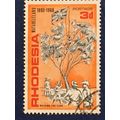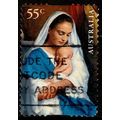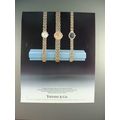Bird - Bewick's swans WWT 2006 postcard
- Condition : New
- Dispatch : 2 Days
- Brand : None
- ID# : 43090967
- Quantity : 1 item
- Views : 653
- Location : United Kingdom

- Seller : justthebook (+1699)
- Barcode : None
- Start : Fri 06 May 2011 20:38:23 (BST)
- Close : Run Until Sold
- Remain : Run Until Sold
More Listings from This Seller view all
Seller's Description
- Postcard
- Picture / Image: Pair of Bewick's Swans by Martin Senior
- Publisher: Wildfowl and Wetlands Trust, 2006
- Postally used: no
- Stamp: n/a
- Postmark(s): n/a
- Sent to: n/a
- Notes & Key words:
------------------------------------------------
Postage & Packing:
UK (incl. IOM, CI & BFPO): 99p
Europe: £1.60
Rest of world (inc. USA etc): £2.75
No additional charges for more than one postcard. You can buy as many postcards from me as you like and you will just pay the fee above once. (If buying postcards with other things such as books, please contact or wait for invoice before paying).
Payment Methods:
UK - PayPal, Cheque (from UK bank) or postal order
Outside UK: PayPal or Google Checkout ONLY please. NO non-UK currency checks or money orders (sorry).
NOTE: All postcards are sent in brand new stiffened envelopes which I have bought for the task. These are specially made to protect postcards and you may be able to re-use them. In addition there are other costs to sending so the above charge is not just for the stamp!
----------------------------------------------
Text from the free encyclopedia WIKIPEDIA may appear below to give a little background information:
*************
The Tundra Swan (Cygnus columbianus) is a small Holarctic swan. The two taxa within it are usually regarded as conspecific, but are also sometimes[1] split into two species, Cygnus bewickii (Bewick's Swan) of the Palaearctic and the Whistling Swan, C. columbianus proper, of the Nearctic. Birds from eastern Russia (roughly east of the Taimyr Peninsula) are sometimes separated as the subspecies C. c. jankowskii, but this is not widely accepted as distinct, most authors including them in C. c. bewickii. Tundra Swans are sometimes separated in the genus Olor together with the other Arctic swan species.[2]
Bewick's Swan is named after the engraver Thomas Bewick, who specialised in illustrations of birds and animals.
C. columbianus is the smallest of the Holarctic swans, at 115–150 cm (45–59 in) in length, 170–195 cm (67–77 in) in wingspan[citation needed] and a weight range of 3.4–9.6 kg (7.5–21 lb). In adult birds, the plumage of both subspecies is entirely white, with black feet, and a bill that is mostly black, with a thin salmon-pink streak running along the mouthline and – depending on the subspecies – more or less yellow in the proximal part. The iris is dark brown. In birds living in waters that contains large amounts of iron ions (e.g. bog lakes), the head and neck plumage acquires a golden or rusty hue. Pens (females) are slightly smaller than cobs (males), but do not differ in appearance otherwise.[2]
Immatures of both subspecies are white mixed with some dull grey feathering, mainly on the head and upper neck, which are often entirely light grey; their first-summer plumage is quite white already, and in their second winter they moult into the adult plumage. Their bills are black with a large dirty-pink patch taking up most of the proximal half and often black nostrils, and their feet are dark grey with a pinkish hue. Downy young are silvery grey above and white below.[2]
Bewick's Swans are the smaller subspecies. There is a slight size cline, with the eastern birds being slightly larger; good measurement data only exists for the western populations however. These weigh 3.4–7.8 kg (7.5–17 lb), 6.4 kilograms (14 lb) on average in males and 5.7 kilograms (13 lb) in females. They measure 115–140 cm (45–55 in) in overall length; each wing is 46.9–54.8 cm (18.5–21.6 in) long, on average 51.9 centimetres (20.4 in) in males and 50.4 centimetres (19.8 in) in females. The tarsus measures 9.2–11.6 cm (3.6–4.6 in) in length, the bill 8.2–10.2 cm (3.2–4.0 in), averaging 9.1 centimetres (3.6 in). Bewick's Swan is similar in appearance to the parapatric Whooper Swan (C. cygnus), but is smaller, shorter-necked and has a more rounded head shape, with variable bill pattern, but always showing more black than yellow and having a blunt forward edge of the yellow base patch. Whooper Swans have a bill that has more yellow than black and the forward edge of the yellow patch is usually pointed. The bill pattern for every individual Bewick's Swan is unique, and scientists often make detailed drawings of each bill and assign names to the swans to assist with studying these birds. The eastern birds, apart from being larger, tend towards less yellow on the bill, perhaps indicating that gene flow across Beringia, while marginal, never entirely ceased. An apparent case of hybridization between a Bewick's and a vagrant Whistling Swan has been reported from eastern Siberia.[2]
Listing Information
| Listing Type | Gallery Listing |
| Listing ID# | 43090967 |
| Start Time | Fri 06 May 2011 20:38:23 (BST) |
| Close Time | Run Until Sold |
| Starting Bid | Fixed Price (no bidding) |
| Item Condition | New |
| Bids | 0 |
| Views | 653 |
| Dispatch Time | 2 Days |
| Quantity | 1 |
| Location | United Kingdom |
| Auto Extend | No |


 for 1 item(s)
for 1 item(s)













![Despicable Me Black Round Watch [37728399]](https://pic.ebid.net/upload_small/3/0/4/1562677271-12833-23.jpg)


